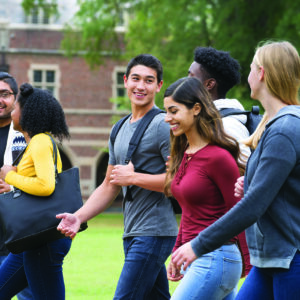
By Kawser Ahmed, Adjunct Professor at the Political Science department, University of Winnipeg
The “freedom convoy” that has taken over downtown Ottawa and inspired other protests is a diverse group of people who have shown themselves not to be interested in “freedom,” “unity” or “vaccine mandates.”
Over the past two weeks, the protest has caused un-freedom; it has allowed extremist groups to gain space, ushering in counter-protesters. Their demands have become a laundry list that began with talk of protesting a vaccine mandate for truckers and overthrowing a democratically elected government (a notion protest leaders now say they reject).
But also worthy of note is that protesters in Ottawa raise some topics of concern for those traditionally on the right and the left of the political spectrum. If some Canadians empathize with some convoy concerns while disagreeing with tactics and visible signs of hate, they must also take a closer look at the sustained mayhem protesters are causing.
This should be seen in the context of extremist white supremacist views emphasizing how corrupt western governments can be undone by creating chaos.
Extremism in many forms and shapes are seen in this protest movement that drive radicalization to violence. Counter-radicalization efforts will be needed by governments in collaboration with other non-government representatives. But the immediate vexing question seems to be finding a peaceful resolution to the conflict. Similar protests were emulated in New Zealand and elsewhere, setting a dangerous precedent in the global West.
Far-right support
By now, the public is familiar with some detail about protest leadership and social media influencers behind the Ottawa event. These include James Bauder, founder of the group Canada Unity, a conspiracy theorist who participated in another convoy linked to white nationalist hate groups, and Pat King, a far-right figure who previously broadcast rants about the “depopulation of the Caucasian race.”
Wired reports many of successful social media posts about the protests are coming from familiar figures from the American far right.
As the protest spread to multiple communities, patience of the mayors of Ottawa and Winnipeg, where I live, has seemed to wane.
Nonetheless, in Ottawa and elsewhere, many protesters are digging in their heels and have promised not to concede to pressure.
Some experts have suggested the ability of Ottawa protesters to barricade themselves and keep the siege going is related to their knowledge of military tactics and law enforcement _ including some endorsement and support from retired or active police.
Political leaders are now faced with a dilemma: whether to end vaccine mandates at the cost of public health hazard (in order to acquiesce to the demands) or to quash the rebellion and restore public order.
Even though there may not be an easy way to fix this, some believe if the government doesn’t act now, it would expose the fragility of our society.
`Hard’ and `soft’ tactics needed
Some protesters have brought young children with them, which makes it even more difficult to enforce violation. That means a mix of hard and soft tactics should be used to reach a quick resolution.
Although every protest has a shelf life, a protest’s trajectory can be difficult to predict. The fact that the “freedom convoy” has garnered support from from elected Conservative party members contributes to its unpredictable nature.
A carefully crafted two-pronged strategy might be advisable in ending the protest peacefully.
Hard security should be based on a containment approach using court injunctions, combined with measured police action. While enforcement remains a sensitive matter, necessary intervention must be carried out according to the law. Violence begets violence and must be avoided.
As such, clear rules of engagement must be determined. The fact that counter-protests are gaining momentum could imply greater challenges for police managing conflict.
Lines of communication with protesters
In the soft approach, a line of communication with the protesters must be kept open with appointed negotiators, as dialogue is one of the best means to diffuse tense situations.
Appointed negotiators should be able to connect with some protesters and convince them to speak against the rest. Political leaders from all stripes should emphasize the dangers of extremism and economic impacts caused by the protest.
Scanning through posts on Facebook in groups supportive of the protests, it is evident that many users are either ignorant of extremist infiltration in the protest or portray far-right presence as a few bad apples only.
Spotting the rhetoric of violence
That means there’s a need to expose links to extremism by raising awareness through education. Greater awareness about the signs, symbols and rhetoric of violence should be made available not only to the protesters but also to the broader public to build opinion against the protest.
Civil society and faith-based organization representatives should be invited to speak against polarization and the risk of violence, since these organizations enjoy legitimacy and bipartisan support. Negotiators could be considered from among the leadership of such organizations.
In this movement, when the mainstream media is accused of spreading “fake news,” information in the form of education from people who aren’t part of the mainstream media might get more traction.
In the past decade, we have observed numerous cases where “lone wolf” terrorists picked up guns and went on mass shootings. Experts with the National Consortium for Study of Terrorism and Responses to Terrorism in the United States highlight that research on deradicalization has noted a difference between people having extreme opinions and taking extreme action. “Lone-wolf” terrorists are likely to have depression or other mental disorder, to have weapons experience and to experience social isolation.
Such figures have taken their cues from accelerationist ideology, which stresses corruption of western governments and bringing change through chaos and violence.
Troubling fault lines
In the end, it all depends on how unified we become first by understanding the social fault lines exposed by the protesters and then take actions to become resilient.
Right now, public discourse is hinting towards a perceived double-standard in policing white people-led protests compared to the Black Lives Matter and Indigenous ones. There are also concerns about potential negative reverberations in the trucker community, particularly for racialized truckers.
And finally: when provincial governments eventually end restrictions or pandemic measures, will this be understood as a victory for the protesters and encourage similar civic unrest in the future?
As the adage says, united we stand, divided we fall. A broader social reconciliation is urgently needed to heal the wounds that have been caused by the “freedom convoy.”







